10.22.12 Gone To Seed

photos by gluttonforlife
A recent visit to our friends' farm up near the Vermont border yielded several delightful items from their bountiful garden, including a curvaceous butternut squash and a great big, beautiful sunflower head. Birds (or mice?) had already had their way with some of the purplish seeds but there were still plenty left. I lopped the yellow-fringed head off the tall, top-heavy plant, ferried it home and left it to dry in the porch for a few days. Then I turned it upside down, banged and clawed all the seeds out and looked into the proper roasting technique.
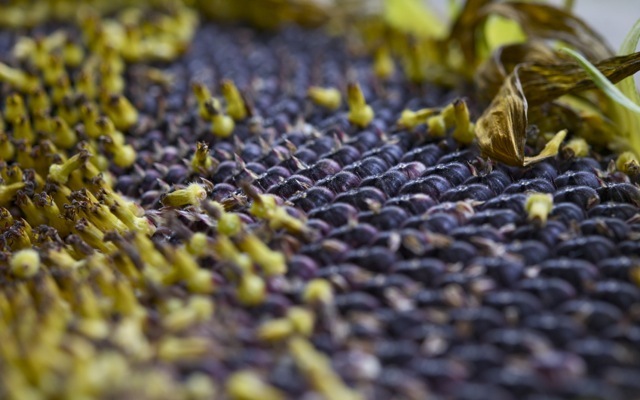
top seeded
It suddenly came to me that I had eaten a lot of sunflower seeds in junior high. They were sort of a craze then. Maybe this was just in hippie Santa Cruz? I remember my mother saying it was not ladylike to spit out the shells. Classic. My affection for these seeds has been renewed. I enjoy the complicated dance tongue and teeth must do to winnow out that little nugget of roasted deliciousness. And if the shells are imbued with some addictively salty flavor, so much the better.
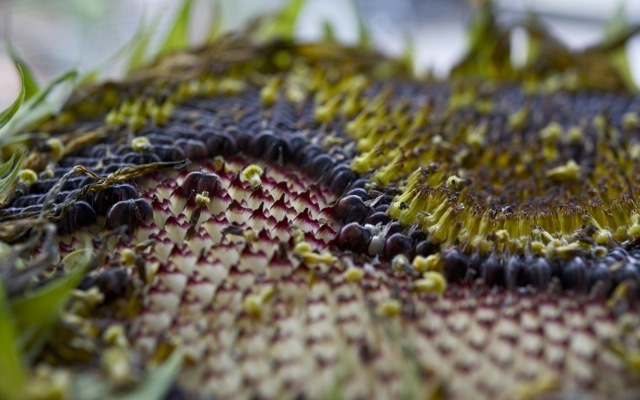
natural design
Sunflowers are small masterpieces, from afar and up close. One day I would like to see a whole field of them, stretching away like a blanket of sunshine. The seeds make a great snack. They're full of polyunsaturated oil and are an excellent source of vitamin E. This is the body's primary fat-soluble antioxidant and it helps prevent cardiovascular disease. They are also rich in phytosterols, plant-based compounds that have a chemical structure very similar to cholesterol but actually help reduce it, as well as enhance immune response and decrease risk of certain cancers. All in all, nothing to sneeze at. The little yellow protuberances are the stamens, which are evidently edible, if you believe Atera's chef Matthew Lightner (see image #6 in this article). Sadly, I discovered this too late to sample them.
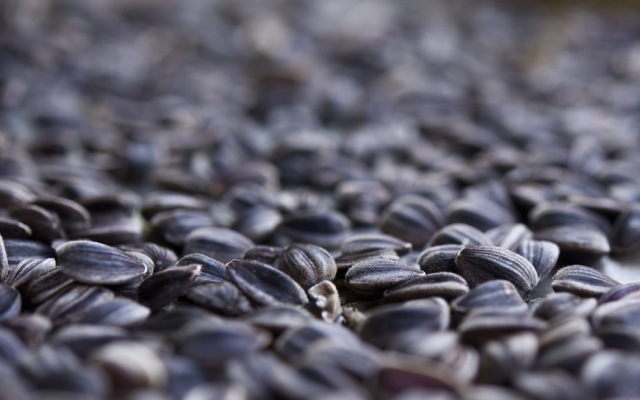
field of seeds
It's recommended that you soak sunflower seeds in a brine overnight before roasting them, so they are imbued with salt. I did that, but I also added a bit more seasoned salt after roasting. The whole thing is a very simple process, once you've gone through the slightly arduous task of removing them from the flower head.
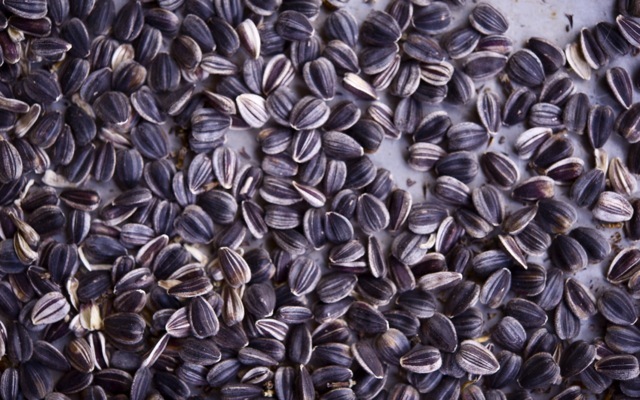
seed money
A batch of roasted sunflower seeds is like money in your snack bank. They travel well, especially by car, as you can spit the shells out the window.
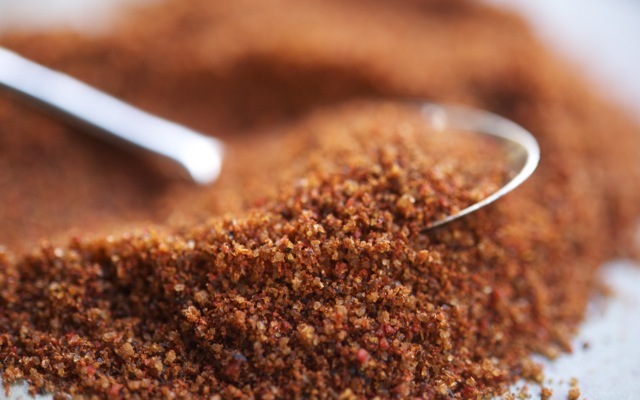
the essence of bacon
After a half hour or so in the oven, I removed my seeds and sprinkled them with a vibrant bacon bbq salt, which actually contains no bacon whatsoever. It's a scintillating blend of smoked salt, brown sugar, smoked paprika, chipotle and a bunch of other non-animal stuff that mimics the taste of smoked pig. Go figure.

seedy alternative
Consider rediscovering the sunflower seed. If they seem like too much bother, you can always buy them already roasted, shelled and salted, and snack on a handful now and then, or toss them into salads and stir-fries. Or get some shelled raw ones and make this sunflower seed butter, which seems like just the thing to spread on toast or stir into your oatmeal on a cold, foggy morning. And that, my friends, requires absolutely no unladylike spitting.
Sunflower Seeds, Roasted & Seasoned
- — raw sunflower seeds in the shell
- — sea salt
- — seasoned salt
Place your sunflower seeds in a large bowl and make enough brine to cover them, combining 1/4-1/2 cup sea salt to every 3 cups water. Soak overnight.
In the morning, drain well and spread out in a single layer on a baking sheet, patting the seeds dry with a paper towel. Roast in a 300-degree oven for about 30 minutes, stirring halfway through. Test a seed to make sure it's done to your liking.
Remove from oven, cool slightly and toss with the seasoned salt of your choice. Store in an airtight container.
 Download Recipe
Download Recipe






4 Comments